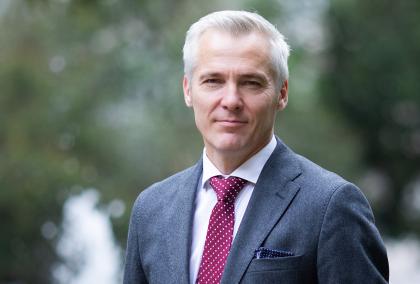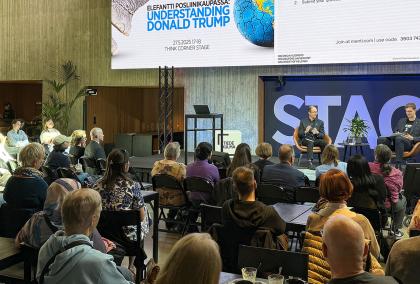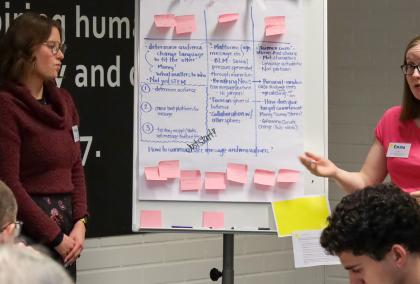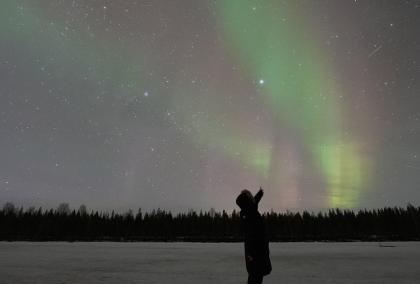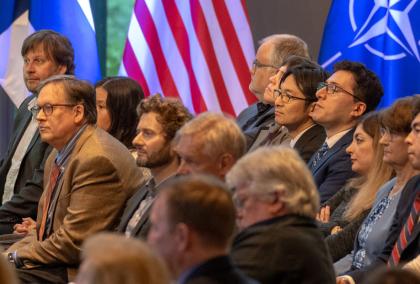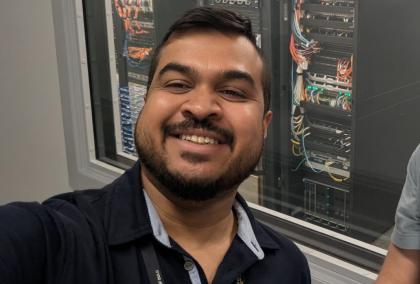Hal said “Welcome home Dave. You must have had a rough day by your slow walk. Can I suggest a martini before dinner, since you had that long lunch walk already to offset the extra calories? And thank you for shopping for groceries, I see that you bought fresh pork chops. Can I suggest that you barbecue the pork chops already in the refrigerator nearing the end of their shelf-life first? And I see you remembered to get the pie shells for your wife’s blueberry pie this weekend, but I see that you forgot her vanilla ice cream. I already texted your wife to stop for ice cream if she wants a la mode still.”
This is the Smart Living of the future with flexible electronics. Pervasive intelligence, like Hal in 2001: A Space Odyssey, sensing our gait across floor tiles, and reading groceries items remotely. Information can hop to nearby nodes, mobile phones, tablets, and computers. From there, information leaps to the cloud and the doctor’s office via 4G/5G. This results in positive outcomes: reduced food wastage; seamless calorie counting with incentives baked in for good behavior; and auto 911 (or 112 in Finland) emergency calls when grandma’s heart starts to fibrillate. Ambient intelligence was one of its former names, now recycled as Internet-of-Things (IoT).
My Fulbright-Nokia Distinguished Chair award is advancing this vision by developing new materials synthesis, device prototyping and system integration implementation with a team of tremendous scientists in Finland, led by my cohorts Don Lupo and Matti Mäntysalo.
Our collective vision is to realize fully printed IoT sensors systems that are as small as credit cards or even postage stamps that can affix sensors to virtually any surface, even an electronic tattoo on our person for medical wearables. Costing just microcents to print, a replacement can be affixed when it washes off. And their competitive edge is to impart them with environmental energy scavenging in a wide range of modalities (light, heat, pressure, Wi-Fi, etc.) to self-power themselves and run autonomously. With a European sensitivity to environmental impact, our proposed IoT nodes will also be non-toxic and reduce end-of-life disposals concerns.
In Finland, and Europe in general, synergistic close coordination with industry is commonplace, leading to dynamic combined teams of academics with industrialists, solving pragmatic engineering problems. This largely transcends convention in USA, where academicians largely study niche futuristic maybe’s. As my career has evolved, my research has pivoted almost entirely to scalable solutions that have a pathway towards commercialization. And the work I am performing with my Finnish team has that trajectory, where one day I hope I will pick up a product knowing that our technology was inside.
The opportunity to join the Fulbright Finland family has been a huge blessing, surrounded by like-minded individuals looking to push the boundaries of science and the arts, while incorporating international exchanges over new vistas and deep cultural sensitivities.
For me, personally, my Fulbright-Nokia Distinguished Chair in Information and Communications Technologies award has been a great opportunity, to gain a foothold into this new frontier and leading me in 2021 to become the General Chair of the IEEE International Flexible Electronics Technology Conference (IFETC), followed by the Founding Editor-in-Chief of the new IEEE Journal on Flexible Electronics.
And through the newly minted Memorandum-of-Understanding between Ohio State University and Tampere University, codifying these expansive research exchanges, including students from each institution, a very vibrant and longstanding collaboration was fomented during this Fulbright-Nokia Distinguished Chair award.
The opportunity to join the Fulbright Finland family has been a huge blessing, surrounded by like-minded individuals looking to push the boundaries of science and the arts, while incorporating international exchanges over new vistas and deep cultural sensitivities.
Performing this Fulbright Finland exchange in the middle of global pandemic has served up a host of obstacles and issues, however, like crawling to New York City just to get fingerprinted at the Embassy of Finland, or getting denied boarding in Atlanta, due to slow Covid-19 test results and taking a taxi out 25 miles into the Atlanta suburbs to an on-site testing center in order to make a later flight, missing all connections.
Lastly, on the ugly side of Fulbright exchanges is the dysfunctionality to which many USA home institutions handle these exchanges. In many instances, including my own, no clear pathway is articulated for researchers to navigate the gauntlet of internal rules, which vary from department to college. Prestigious Fulbright’s are praised by home institutions, but then there is a lack of support to travel or recognition that Covid-19 “work-from-home” protocols have broken the shackles of prescribed norms.
But overall, the future looks very bright thanks to the Fulbright Finland Foundation and the Nokia Foundation.
